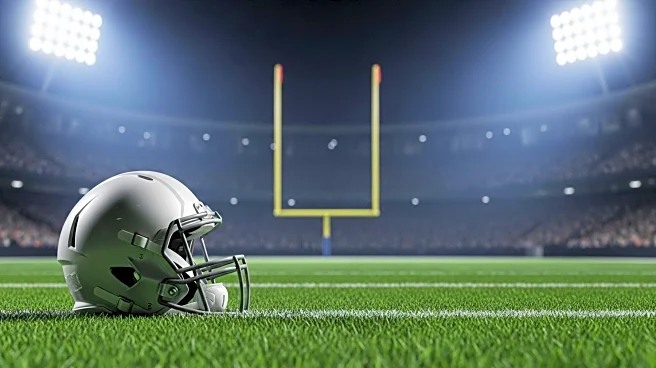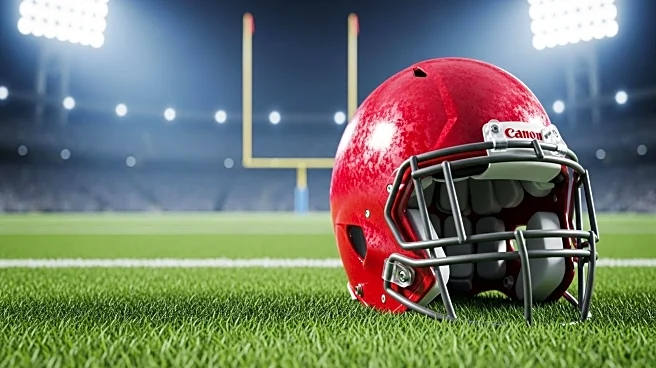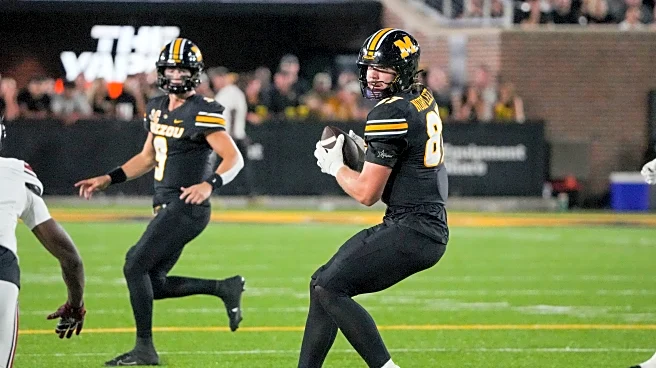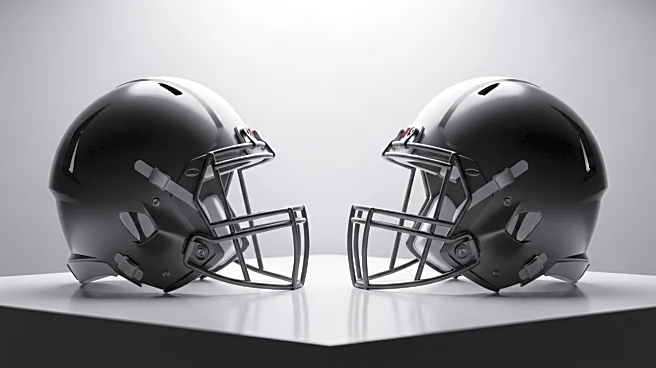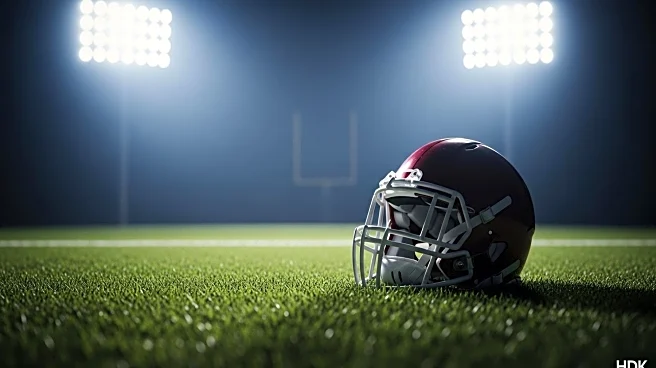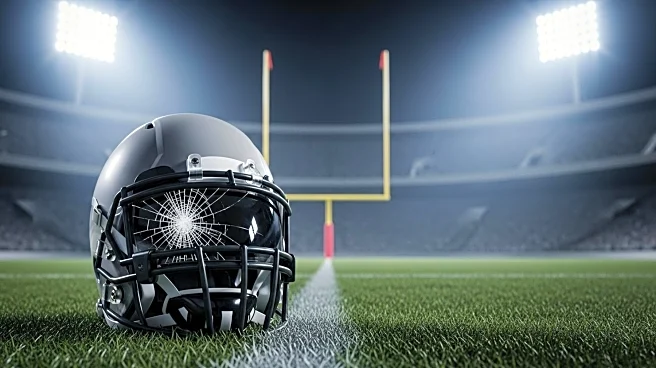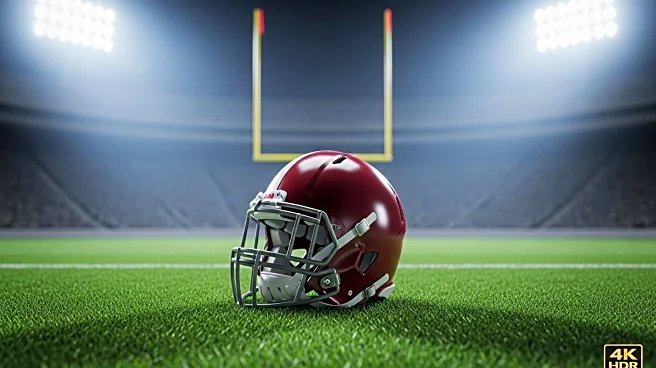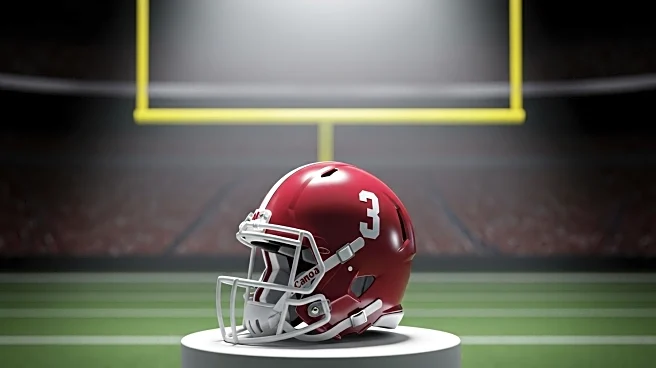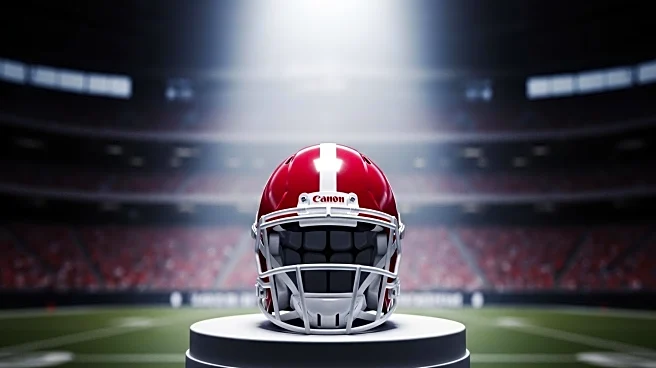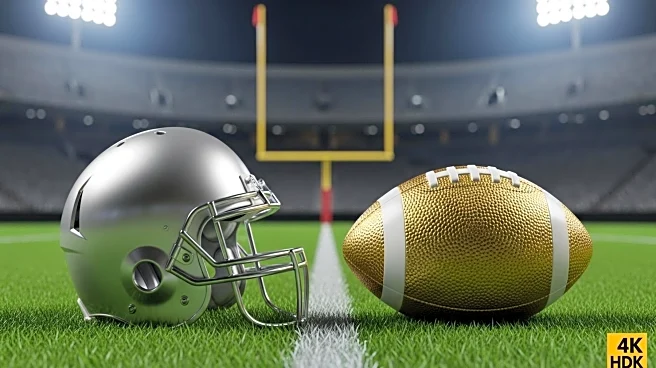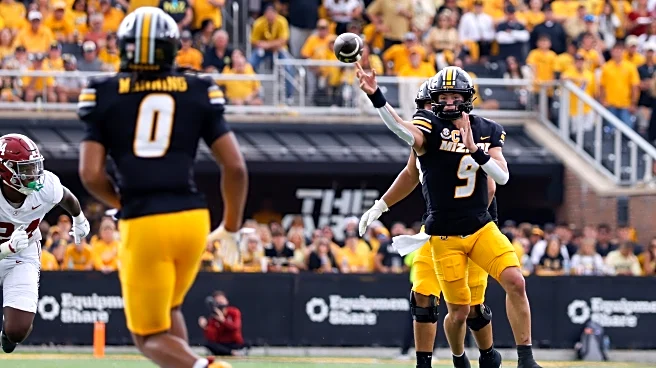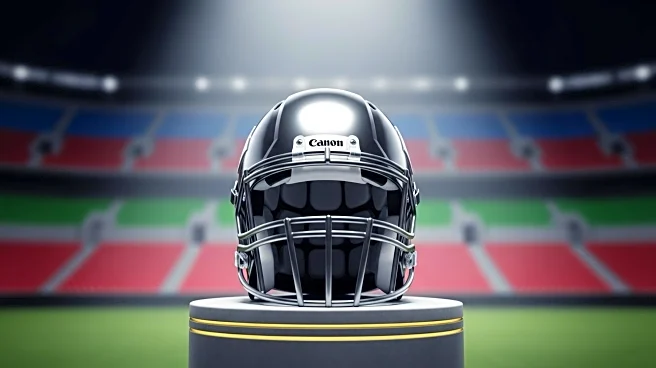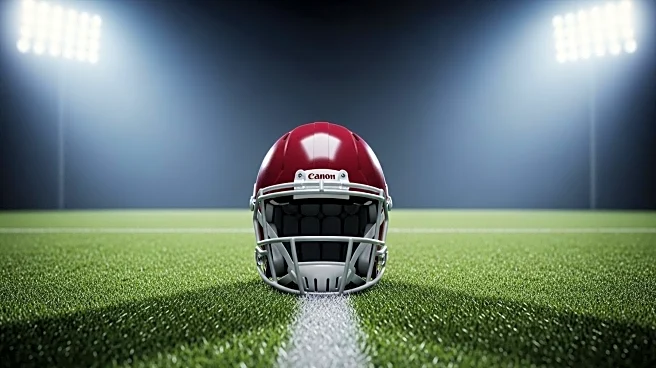What is the story about?
What's Happening?
Alabama freshman wide receiver Derek Meadows was forced to leave the game against Missouri after sustaining a hard hit from Missouri defensive back Marvin Burks Jr. The incident occurred during a pass attempt from Alabama quarterback Ty Simpson, which Meadows attempted to catch. Following the hit, Meadows remained on the field for several minutes before walking off with assistance from the athletic training staff. The officials flagged Burks for targeting, leading to his ejection after a quick review. This penalty moved the ball into Missouri territory, adding to the defensive penalties Missouri had already accrued, granting Alabama 35 free yards. Meadows, a true freshman from Bishop Gorman High School in Las Vegas, has appeared in four games this season but has yet to record a catch.
Why It's Important?
The ejection of Marvin Burks Jr. is significant as it removes one of Missouri's key defensive players from a crucial game against Alabama, a team known for its explosive offense. This could impact Missouri's defensive strategy and effectiveness for the remainder of the game. For Alabama, the incident highlights the physical risks players face and the importance of player safety protocols, such as targeting rules designed to protect athletes from dangerous hits. Meadows' injury could affect Alabama's receiving options, although he has not yet been a major contributor in terms of catches this season.
What's Next?
Missouri will need to adjust its defensive lineup to compensate for the loss of Burks, potentially affecting their ability to contain Alabama's offense. Alabama will continue to monitor Meadows' condition and may need to rely on other receivers to fill the gap left by his absence. The game itself remains a critical matchup in the Southeastern Conference, with implications for both teams' standings and postseason prospects.
Beyond the Headlines
The incident underscores ongoing concerns about player safety in college football, particularly regarding head injuries and the effectiveness of targeting rules. It also raises questions about the balance between maintaining the physical nature of the sport and ensuring the well-being of athletes. Long-term, this could influence discussions on rule changes or enhancements to protective gear.
AI Generated Content
Do you find this article useful?
